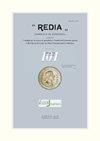农业生态系统蚂蚁多样性评估:以意大利阿迪杰河谷葡萄园为例
IF 0.6
4区 生物学
Q3 ZOOLOGY
引用次数: 2
摘要
农业生态系统已在全球土地利用中占据主导地位,因此保护其生物多样性对环境可持续性至关重要。蚂蚁是分布最广的陆生节肢动物之一,由于其显著的多样性,它们被认为是生物多样性监测的一个很好的代理群体,也在农业生态系统中。葡萄园是世界范围内广泛存在的具有经济价值的文化,并拥有许多蚂蚁物种,提供有意义的生态系统服务和危害。尽管蚂蚁在这些农业生态系统中发挥着重要作用,但对葡萄园蚂蚁生物多样性的研究仍然很少,尤其是在意大利。在此背景下,我们首次基于陷阱数据对意大利阿迪杰谷葡萄园的蚂蚁动物群进行了详细的定量和定性评估,并与欧洲和其他大陆的其他类似评估进行了比较。我们记录了22个物种(7-16个/ or-chard)的组合,主要由3个耐干扰物种(包括一个引进物种)主导。葡萄园的蚂蚁群在世界范围内似乎是相当异质的,主要受到当地生态和生物地理的限制,并且大多数蚂蚁物种在这些农业生态系统中所起的作用目前尚不清楚。本文章由计算机程序翻译,如有差异,请以英文原文为准。
ASSESSING ANT DIVERSITY IN AGROECOSYSTEMS: THE CASE OFITALIAN VINEYARDS OF THE ADIGE VALLEY
Agroecosystems have gained a dominant positionon worldwide land-usage, and therefore preserving their biodiversity is crucial for environmental sustainability. Ants are one of the most widespread groups of terrestrial arthropods, and,thanks to their significant diversification,they are considered as a good proxy group for bio-diversity monitoring, also in agroecosystems. Vineyards are economically valuable cultures widespread worldwide,and hosting many ant species, that provide meaningful ecosystem services and disservices. Despite the important role that ants play in these agroecosystems, ant biodiversity in vineyards is still poorly studied, especially in Italy. In this context, we present a first detailed quantitative and qualitative assessment of the ant fauna of Italian vineyards from the Adige Valley based on pitfall traps data, and discuss the results in comparison with the few other similar assessments from Europe and other continents. We document anassemblage of 22 species (7-16 per or-chard), mostly dominated by three disturbance-tolerant species (including an introduced species). Vineyards’ ant faunas appear to be rather heterogeneous worldwide, mainly following local ecological and biogeographical constraints, and the role that most ant species play in these agroecosystems is presently unknown.
求助全文
通过发布文献求助,成功后即可免费获取论文全文。
去求助
来源期刊

Redia-Giornale Di Zoologia
ZOOLOGY-
CiteScore
1.20
自引率
20.00%
发文量
18
审稿时长
>12 weeks
期刊介绍:
Redia supports its long history of basic and applied research in entomology and invertebrate zoology in the field of crop and forest tree protection responding at the same time to the increasing need of innovation and technological improvement.
 求助内容:
求助内容: 应助结果提醒方式:
应助结果提醒方式:


